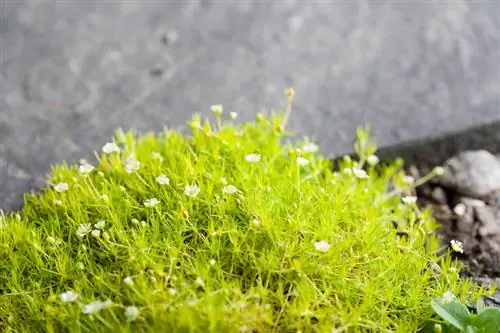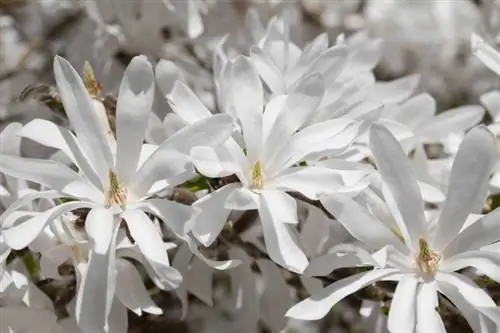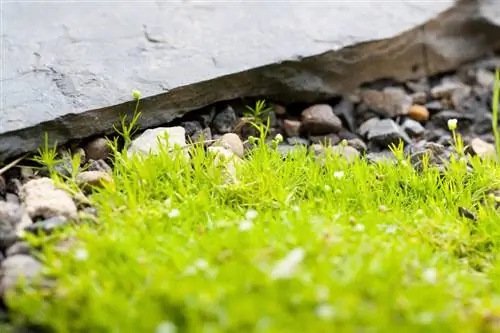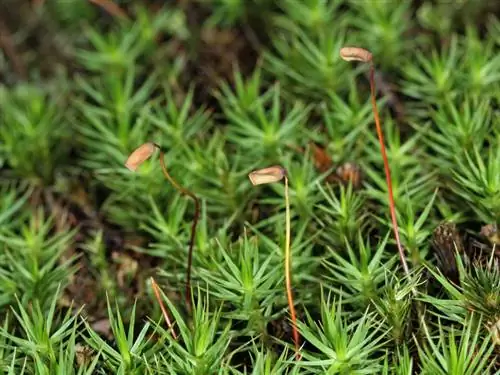- Author admin [email protected].
- Public 2023-12-16 16:46.
- Last modified 2025-01-23 11:20.
Due to personal living conditions, the graves of family members are often a little further away from their own place of residence. The relatively easy-care star moss is well suited for greening graves as it copes well with most locations and looks particularly pretty when it is in bloom.
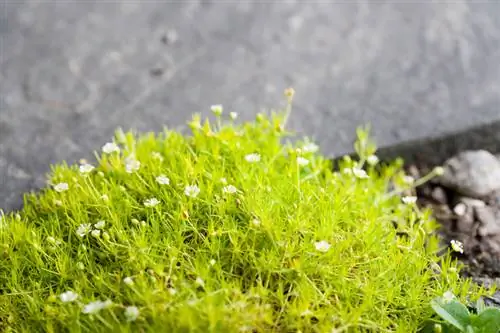
Why is star moss suitable for grave planting?
Star moss is suitable for grave planting because it is easy to care for, hardy and perennial. It requires little fertilizer, thrives well in partial shade and is visually appealing thanks to its delicate white flowers and low height.
The benefits of star moss for grave planting
The star moss is characterized by various factors that are positive for permanent grave planting with little regular maintenance:
- it needs little or no fertilizer
- it is perennial and hardy
- In locations in partial shade, it makes do with rain as a water supply
While other plants sometimes look quite unsightly after flowering and wilted inflorescences should be removed, seeds ripen on the flower stalks of the delicate flowers of the star moss, which do not visually disturb the overall picture due to their tiny size. In addition, the flowers of Sagina subulata are white, which can symbolize purity and hope in the cemetery. Since the star moss only grows a few centimeters high, it does not overgrow grave lanterns or holy water containers.
Potential difficulties when planting star moss at the cemetery
In cemeteries, pure peat is usually used as a substrate for optical reasons, as it has a uniform black color. The star moss can cope with somewhat acidic soil, but the peat-rich substrate stores rainwater very well. This can lead to a certain amount of waterlogging, which the star moss does not tolerate well. Before planting, the soil under the star moss should be made more permeable with sand. If a grave planted with star moss is not visited for an entire summer season, the plants may spread laterally beyond the edge of the grave. Simply cut off overgrown parts of the star moss with secateurs (€14.00 on Amazon). Since snails like to pounce on the star moss, you may want to consider an edge barrier made of sharp-edged gravel.
Combine the star moss with other decorative elements
As the star moss initially forms approximately round cushions, this plant can be used to create decorative shapes on the grave area. Particularly attractive patterns can be created with brightly colored pebbles or bark mulch. In this way, you also prevent unwanted foreign weed growth, which the star moss usually has difficulty defending itself against.
Tip
The star moss is basically perennial and also hardy, but rather short-lived. Therefore, sow early in areas that are becoming bare and remove any leaves before winter, otherwise the plants may become moldy over the winter.

